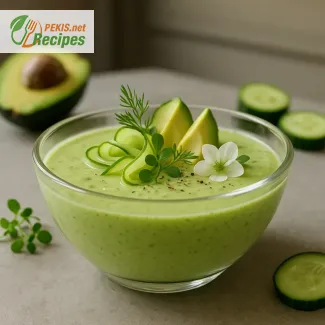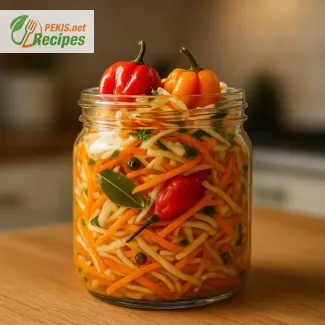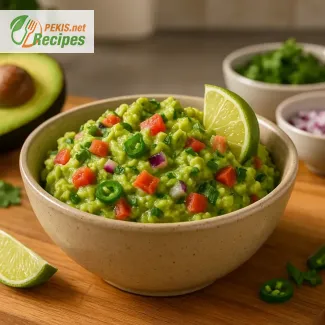
How to Craft an Elegant Grazing Experience at Home
A guide to assembling a visually stunning and delicious charcuterie board with the perfect balance of textures and flavors
There’s something undeniably elegant and inviting about a well-arranged charcuterie board. More than just a platter of cheeses, crackers, and cured meats, it is a celebration of craftsmanship, seasonality, and sensory pleasure. Whether you’re entertaining guests, preparing a romantic dinner, or simply elevating a casual night in, a thoughtfully curated board can transform any occasion into something special. This culinary tradition, deeply rooted in European food culture, has become a global symbol of refined casual dining.
The popularity of charcuterie boards lies in their versatility. From artisan cheeses and crunchy crackers to finely sliced cured meats, these boards offer endless combinations that appeal to all tastes and preferences. You can choose a rustic, country-style board with robust flavors or a delicate, gourmet presentation with imported delicacies and floral notes. The secret is in the details — flavor pairings, textures, and visual appeal all contribute to an unforgettable grazing experience.
The art of balance: cheese, crackers, and meats
A successful board begins with the foundation of quality cheeses. Whether you’re choosing a bold aged cheddar, a soft and creamy brie, or a tangy blue cheese, variety is key. Aim for a range of textures and milk types (cow, goat, sheep) to cater to different palates. Arrange your selection to guide guests through a tasting journey — from mild to strong, creamy to crumbly.
Complementing the cheeses are the crackers and breads. These should not only serve as a base but also add texture and flavor. Opt for seeded crisps, artisan baguette slices, or traditional water crackers. Consider incorporating breadsticks or toasted rye for additional crunch and contrast.
Cured meats bring a savory depth to the board. Think thinly sliced prosciutto, robust salami, spicy chorizo, or delicate bresaola. Their richness pairs beautifully with both soft cheeses and dry, nutty varieties. Folding or rolling the slices creates volume and visual interest, enhancing the overall aesthetic of the board.
Accent ingredients that elevate your board
Beyond the staples, what truly sets an exceptional charcuterie board apart are the thoughtful accompaniments. These elements round out the flavor profile and add color, sweetness, acidity, and crunch.
Include seasonal fruits such as grapes, figs, apple slices, or pomegranate seeds to provide freshness and a juicy bite. Dried fruits like apricots, cranberries, and dates offer concentrated sweetness that pairs especially well with blue cheeses and sharp cheddars.
For acidity and texture, add pickled vegetables — cornichons, olives, marinated artichokes, or cocktail onions. These briny bites balance the richness of meats and cheeses and cleanse the palate.
Nuts such as almonds, walnuts, or pistachios contribute a satisfying crunch. Lightly toasted or spiced nuts add warmth and complexity, while candied nuts introduce a sweet contrast to savory elements.
And of course, don’t forget spreads and dips. Whole-grain mustard, honey, fig jam, or red pepper jelly can dramatically enhance a bite. Even a whipped ricotta or herbed cream cheese can serve as a decadent addition.
Presentation techniques that impress
A visually appealing board is about intuitive layout and organic flow. Begin by placing your cheeses — use odd numbers for visual symmetry and space them evenly. Next, add small bowls for jams, olives, or nuts. Then layer in your meats, tucking them around the cheeses or fanning them along the edges.
Fill gaps with crackers, fresh fruit, and sprigs of herbs such as rosemary or thyme. Vary your shapes — round cheeses, rectangular crackers, rolled meats, whole nuts — to create movement and texture. Use a large wooden board, marble slab, or even a baking tray lined with parchment for a rustic feel.
Color is crucial: bright red grapes, golden honey, green olives, and vibrant orange apricots create contrast and draw the eye. A successful board is not only delicious but Instagram-worthy, inviting people to gather, share, and enjoy.
When and where to serve a charcuterie board
Charcuterie boards are remarkably flexible and can suit nearly any occasion. They shine as a pre-dinner appetizer, a brunch centerpiece, or a wine tasting companion. During holidays, they serve as festive conversation starters. For date nights, they offer a relaxed and indulgent dining alternative.
Boards can be scaled up for large events or personalized for two. They’re also an excellent choice for dietary inclusivity — easily tailored to vegetarian, gluten-free, or low-carb preferences. With minimal cooking involved, they allow hosts to enjoy the moment without stress.
Most importantly, a charcuterie board encourages sharing and connection. It’s not about rules or strict recipes, but about celebrating flavors in a communal way — creating a space where people explore tastes, textures, and stories together.
Selecting the right ingredients for maximum flavor
Ingredient selection plays a central role in crafting a memorable board. Start with quality over quantity. A handful of premium, well-chosen elements will always surpass a cluttered spread with generic items. Visit local markets, artisanal producers, or specialty shops where products are handled with care and passion.
Choose cheeses with distinct personalities — a buttery triple-cream brie, a crumbly goat cheese with herbs, a pungent taleggio. Mix familiar favorites with one or two adventurous picks. For meats, balance dry-aged and spicy with silky, mild options.
Your crackers and breads should be sturdy enough to support toppings without overpowering. A neutral base helps showcase the flavors of what’s on top.
Finally, remember that accompaniments should harmonize. Fresh figs pair beautifully with blue cheese and prosciutto. Mustard cuts through the fattiness of salami. A drizzle of honey mellows sharp cheddar. Every item has its role in elevating the bite.
A customizable foundation for creativity
One of the reasons charcuterie boards are so beloved is because they invite creativity. You can theme your board by region — a French board with Brie, Comté, and saucisson sec; an Italian spread with Parmigiano-Reggiano, gorgonzola, and speck; or even a vegan version with plant-based cheeses and lentil pâté.
Seasonal boards reflect the time of year: fresh berries and goat cheese in summer, roasted nuts and cranberry jam in autumn. Pair your ingredients with beverages — a crisp white wine, sparkling cider, or craft beer — to tie everything together.
This endless adaptability ensures that no two boards are ever quite the same. And yet, the heart of the experience remains constant: sharing delicious food in a beautiful, relaxed setting.
Step 1: Select and prepare the board
Use a large wooden board, marble slab, or slate tray, approximately 35–40 cm (14–16 inches) in diameter or length. Clean the surface and prepare small bowls for jams, olives, and pickles.
Step 2: Position the cheeses
Cut the cheeses into a mix of wedges, slices, or leave soft cheeses whole with serving knives. Arrange them spaced apart on the board, forming visual anchors. Place stronger cheeses on one side (blue cheese, aged cheddar), and milder cheeses (brie, goat) on the other.
Step 3: Fold and arrange the cured meats
Fold prosciutto into ribbon-like rolls, slice salami into thin rounds, and arrange chorizo in loose waves. Tuck the meats in between the cheeses to add dimension and contrast.
Step 4: Add crackers and bread
Fan out assorted crackers and baguette slices in arcs between cheeses and meats. Avoid placing crispy crackers near moist items like fruits or pickles to preserve their texture.
Step 5: Incorporate fruits and dried fruits
Distribute red and green grapes in small clusters. Halve fresh figs for visual appeal and texture. Scatter dried cranberries and apricots to fill gaps and provide sweetness.
Step 6: Add nuts for crunch
Place the walnuts, almonds, and pistachios in small piles around the board to add crunchy texture and nutty flavors.
Step 7: Include pickles and olives
Fill small bowls with cornichons and mixed olives. Position them at the edges for easy access, or directly on the board if using toothpicks.
Step 8: Add dips and spreads
Place fig jam and honey in small serving dishes with mini spoons. Position near cheeses that pair well (e.g., honey near blue cheese or cheddar).
Step 9: Garnish and finish
Add sprigs of rosemary or thyme to enhance aroma and give a fresh, natural look. Ensure the board looks balanced, with even color distribution and inviting textures.
Elevating Your Charcuterie Board to a Culinary Masterpiece
Expert tips for enhancing flavor, texture, and presentation with thoughtful ingredient choices and creative techniques
A traditional charcuterie board is already a work of culinary beauty—offering an elegant spread of cheeses, crackers, and cured meats. But to truly impress guests or treat yourself to an elevated experience, knowing how to refine and personalize your board makes all the difference. Whether you're serving it as a centerpiece for entertaining or indulging in a quiet evening of wine and bites, small adjustments can have a big impact on flavor and presentation.
Enhancing the flavor profile with smart ingredient substitutions
One of the simplest ways to upgrade your board is to focus on the quality and diversity of your cheeses. While traditional boards often feature staples like brie and cheddar, consider exploring less conventional varieties such as a creamy robiola, a smoky scamorza, or an aged manchego. Each cheese offers a unique mouthfeel and flavor complexity that enhances the overall experience.
For those who enjoy bold flavors, adding a truffle-infused cheese or a cheese washed in wine or beer can introduce a sophisticated layer of aroma and richness. These cheeses pair beautifully with dried fruits and savory meats, offering contrast and balance.
If you want a healthier or lactose-free twist, opt for aged goat cheese or hard sheep’s cheese, both of which are lower in lactose and easier to digest for sensitive individuals.
Reinventing crackers and breads for more texture and nutrition
While plain crackers and baguette slices are the norm, upgrading your crunchy base can change the entire tone of your board. Introduce seeded wholegrain crackers, rye crisps, or gluten-free flatbreads to add a nutty flavor and better nutritional profile. These alternatives provide fiber and protein, and they also offer a visually appealing rustic edge.
For a sweet-savory interplay, consider raisin-walnut crisps or fig and olive crackers, which pair exceptionally well with sharp cheeses and cured meats.
If you want to avoid refined carbs altogether, thin slices of cucumber, jicama, or sweet potato chips can offer a refreshing and health-conscious alternative to traditional breads.
Choosing cured meats that go beyond tradition
Traditional charcuterie boards usually feature prosciutto, salami, and chorizo. While these remain timeless choices, exploring artisan or regional cured meats can elevate your board’s authenticity and complexity. For example:
- Bresaola: a lean, air-dried beef that pairs well with soft cheeses and olive oil
- Coppa: known for its rich marbling and deep flavor
- Lomo embuchado: a Spanish cured pork tenderloin with a delicate smokiness
For a lighter option, consider turkey pastrami or lean venison salami. These choices reduce fat content while still delivering robust taste.
For vegetarians or vegans, try plant-based charcuterie slices made from legumes, mushrooms, or beets. Their smoky and umami-forward profiles can mimic the savory qualities of meat while providing a more sustainable alternative.
Building a better board with next-level accompaniments
To truly upgrade your charcuterie board, shift focus to complementary elements that can brighten, balance, or intensify flavors. Standard additions like grapes and olives are excellent, but experimenting with more refined accents can transform your board from ordinary to spectacular.
- Fermented vegetables: kimchi, pickled radishes, or sauerkraut add a tangy edge and digestive benefits
- Marinated mushrooms or roasted peppers: enhance umami and introduce warmth
- Exotic fruits: like persimmons, pomegranate arils, or passion fruit slices can bring color and tartness
Upgrading your spreads also makes a difference. Instead of plain honey, try hot honey, black garlic jam, or caramelized onion chutney. Each introduces depth and interplay with cheeses and meats in an exciting way.
The visual art of layering and styling
A visually striking board invites people to explore and engage. Instead of random placement, think in terms of layers, colors, and symmetry. Use small bowls to group wet ingredients and herbs to section off areas while introducing fragrance.
Instead of the traditional round wooden board, try a black slate tray, marble slab, or olive wood plank. These materials offer a more modern, upscale look and help highlight the natural hues of your ingredients.
For larger gatherings, multiple smaller boards can be styled as a grazing table centerpiece, encouraging movement and conversation.
Why homemade always tastes better
Pre-made charcuterie platters from grocery stores can be convenient, but they rarely match the freshness, customization, and quality of a homemade board. Making your own allows you to:
- Choose ingredients based on dietary needs or flavor preferences
- Incorporate seasonal and locally sourced produce
- Control the salt, sugar, and preservative content
- Create a presentation tailored to your event or guests
Homemade boards also reflect care and creativity, making them more memorable and appreciated by those who share them.
Common mistakes to avoid when preparing a charcuterie board
Even with the best ingredients, a few missteps can detract from your board’s impact. Avoid these frequent errors:
- Overcrowding: Leave space between items for easier access and cleaner presentation
- Lack of balance: Too much of one texture or flavor (e.g., all soft cheeses or all salty meats) leads to monotony
- Poor timing: Serving cheeses straight from the fridge dulls their flavor; let them rest for at least 30 minutes before serving
- Ignoring temperature: Keep meats chilled until right before serving to maintain food safety
Also, avoid serving low-quality crackers that crumble or overpower the toppings. The goal is balance, not distraction.
Health-conscious upgrades without compromising taste
If you’re aiming to make your charcuterie board more nutritious, you don’t have to sacrifice indulgence. Here are a few tips:
- Swap high-fat cured meats with lean proteins like smoked turkey or nitrate-free deli slices
- Choose low-sodium cheeses or limit portion sizes of saltier varieties
- Include raw veggies like cherry tomatoes, baby carrots, or bell pepper strips for crunch and color
- Use unsweetened dried fruits to avoid added sugars
- Add sprouted nuts or seeds for added digestibility and micronutrients
Even your dips can be healthier — try yogurt-based spreads, hummus, or avocado cream as lighter alternatives to rich pâtés or cheese-based dips.
Seasonal adaptations to keep things fresh and exciting
Tailor your board to the time of year for a seasonally inspired experience. In spring, feature strawberries, goat cheese, and asparagus spears. In autumn, lean into figs, roasted squash slices, and spiced nuts. Winter boards benefit from deeper flavors like smoked meats, dried citrus, and hearty cheeses.
You can also build theme boards — Mediterranean, French countryside, Alpine, or even breakfast-themed versions using waffles, bacon, fruit compotes, and cheese spreads.
Each change offers new textures and inspiration while keeping the core elements of the charcuterie board intact.
By staying intentional with every ingredient and thoughtful in presentation, you can transform a classic charcuterie board into a truly elevated culinary experience.
Allergens present in the recipe:
- Milk (cheese)
- Gluten (baguette, some crackers)
- Nuts (walnuts, almonds, pistachios)
- Sulphites (dried fruits, olives, cured meats)
Tips to replace allergens and gluten:
- Use gluten-free crackers and gluten-free bread to avoid gluten.
- Replace cheese with plant-based cheese alternatives for a dairy-free version.
- Substitute nuts with roasted chickpeas or toasted seeds.
- Use nitrate-free, preservative-free meats to avoid sulphites.
Vitamins and minerals per serving (approximate):
- Vitamin A: 480 µg – supports vision and immune health
- Vitamin B12: 2.1 µg – important for red blood cell formation
- Vitamin D: 1.4 µg – supports bone health and immune function
- Calcium: 360 mg – essential for bones and teeth
- Iron: 3.2 mg – supports oxygen transport and energy metabolism
- Magnesium: 60 mg – important for muscle and nerve function
- Zinc: 4.5 mg – contributes to wound healing and immune response
- Phosphorus: 420 mg – vital for energy storage and bone structure
- Potassium: 450 mg – helps regulate fluid balance and nerve signals
- Selenium: 25 µg – protects cells from oxidative stress
Antioxidants per serving (approximate):
- Polyphenols from grapes and olives: ~180 mg – help reduce inflammation
- Vitamin E from almonds and pistachios: ~5 mg – protects cells from damage
- Anthocyanins from red grapes and figs: ~50 mg – support heart and brain health
- Flavonoids from honey and cranberries: ~40 mg – have antiviral and anti-inflammatory effects
- Resveratrol from red grapes: ~1.5 mg – may benefit cardiovascular health





